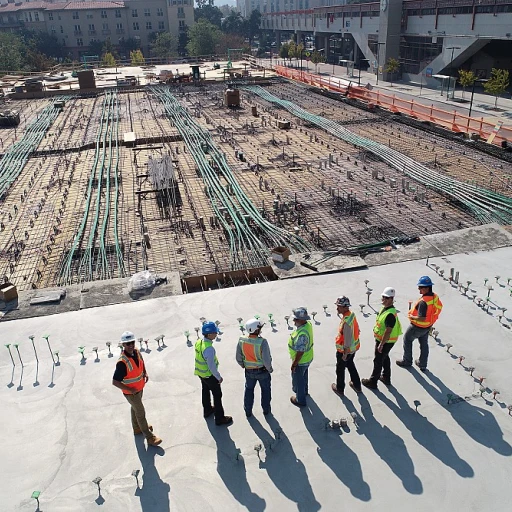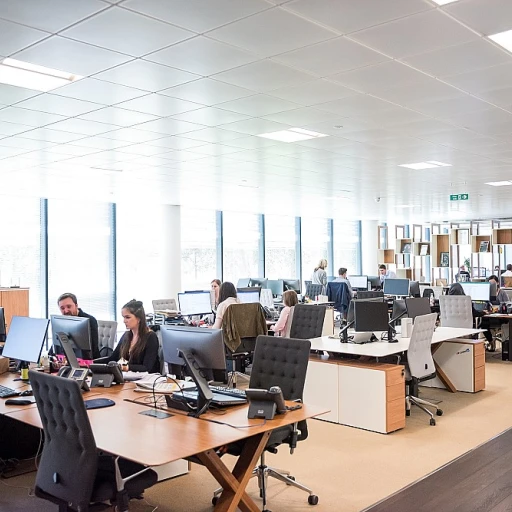Understanding the Role of Employee Feedback in Productivity
The Impact of Employee Feedback on Enhancing Workplace Efficiency
Employee feedback plays a crucial role in fostering productivity within the workplace. It serves as a bridge between management and team members, allowing for a continuous flow of communication that can identify areas for improvement. Implementing effective feedback mechanisms can significantly enhance the work environment and business productivity, ultimately leading to improved outcomes.
Feedback enables employees to understand their strengths and areas where they need to improve, aligning their personal goals with the company’s objectives. This alignment is vital for effective task management and project management. When feedback is clear and constructive, it helps employees focus on their tasks more effectively, and improves time management skills.
Furthermore, feedback sessions can be an avenue for enhancing professional growth, which is intertwined with productivity. Employees who receive regular, actionable insights are more likely to engage fully in their duties, utilizing productivity tools and management software to support their workflow.
Utilizing cutting edge management techniques, including the use of automation and artificial intelligence, can also play a part in facilitating effective feedback. These technologies can streamline the process, making it easier to collect and analyze employee feedback data, and in turn, apply time tracking and task prioritization strategies like the Pomodoro Technique and time blocking.
In a dynamic and evolving business environment, where remote work is becoming more common, maintaining a robust feedback loop is key to sustaining employee productivity. Leaders who recognize and act upon the valuable insights from feedback can create a workplace that not only embraces collaboration but also drives significant improvements in business outcomes.
Identifying Common Challenges in Employee Feedback
Overcoming Obstacles in Employee Feedback
Employee feedback is essential for improving workplace productivity; however, several challenges can impede its effectiveness. Understanding these hurdles is crucial to optimizing feedback systems.- Communication Gap: Clear and effective communication is pivotal. Poor communication often leads to misinterpretations and, consequently, reduced productivity. Encouraging a culture of open dialogue can bridge this gap.
- Feedback Overload: Constant feedback can overwhelm employees, causing them to lose focus on their tasks. Implementing time management strategies such as time blocking or the Pomodoro technique helps in managing workload efficiently.
- Outdated Feedback Techniques: Relying solely on traditional feedback approaches can result in missed opportunities for improvements. Leveraging cutting-edge techniques like real-time feedback tools enhances responsiveness and engagement.
- Fear of Negative Feedback: Employees often hesitate to share honest opinions due to fear of repercussions. Creating a supportive work environment encourages transparency and fosters collaboration.
- Inadequate Tracking and Measurement: Without proper tracking, businesses struggle to assess the impact of feedback. Utilizing project management and time-tracking software can facilitate data-driven decisions.
Leveraging Technology for Effective Feedback Mechanisms
Embracing Technology to Enhance Feedback Systems
In today's fast-paced work environment, leveraging technology is crucial for establishing effective feedback mechanisms. With the rise of remote work and distributed teams, digital tools have become indispensable in maintaining a cohesive feedback loop. Here’s how technology can be harnessed to improve employee productivity and ensure that feedback is both timely and actionable.
Utilizing Advanced Feedback Tools
Modern productivity tools and management software offer robust platforms for collecting and analyzing feedback. These tools enable real-time communication, allowing team members to share insights and address issues as they arise. Moreover, the integration of tracking software helps in monitoring progress and identifying areas that require attention.
- Automation: Automated systems streamline feedback collection, reducing the time spent on repetitive tasks and enabling employees to focus on more critical projects.
- Artificial Intelligence: AI-driven analytics provide valuable insights into employee performance and engagement, facilitating data-driven decisions.
- Collaboration Platforms: Tools that support collaboration enhance team dynamics, promoting a culture of open communication and continuous improvement.
Implementing Effective Feedback Strategies
To maximize the benefits of technology in feedback systems, businesses must implement effective strategies. This includes setting clear goals for feedback processes and ensuring that team members are trained in using new tools. For more insights on implementing these strategies, explore effective strategies for implementing employee feedback.
Enhancing Business Productivity
By integrating cutting-edge technologies, businesses can significantly enhance productivity. These tools not only facilitate efficient time management but also support project management by ensuring that feedback is integrated into every stage of a project. As a result, teams can achieve better alignment, leading to improved outcomes and a more dynamic work environment.
Best Practices for Constructive Feedback
Mastering the Art of Constructive Feedback
Effective employee feedback serves as a critical driver of productivity and team dynamics in any work environment. Providing constructive feedback can lead to enhanced focus and a well-coordinated team by addressing areas for improvement while acknowledging accomplishments.
To begin with, it's essential to integrate specific goals into the feedback process. This involves aligning feedback with task management objectives and business productivity strategies. Clearly defined goals offer guidance for team members and help them stay on track, contributing to improved employee productivity.
Timing is another key element of successful feedback. Immediate feedback, ideally in real time, ensures that employees can quickly address and rectify issues. For complex projects, consider implementing time management techniques like the Pomodoro Technique or time blocking to make feedback an ongoing process rather than a once-a-year event.
Another crucial aspect is ensuring feedback is actionable and specific. Vague statements often lead to confusion rather than correction. It's beneficial to link feedback to observable behaviors or tasks, which helps employees understand exactly what needs to change.
Encouraging a culture of collaboration can also make feedback more effective. Fostering open communication between employees and leadership can create a supportive atmosphere where feedback is seen as a growth opportunity rather than a critique.
Utilizing cutting edge technology such as AI and machine learning can further refine the feedback process. Tracking software and productivity tools can help gather data on performance and repetitive tasks, providing a solid foundation for evidence-based feedback.
Measuring the Impact of Feedback on Productivity
The Metrics Behind Feedback’s Role in Enhancing Productivity
When aiming to boost productivity, it is paramount to measure the impact of employee feedback diligently. This involves understanding not only the direct outcomes but also indirect benefits that nudge an organization's productivity upward.
Here are several tangible ways to assess the influence of employee feedback:
- Performance Data Analysis: Regular data tracking and analysis using management software can highlight improvements in employee productivity. Monitoring these metrics can help correlate feedback with enhanced task completion rates and project success.
- Time Management Improvements: Effective feedback can streamline task management. Utilizing tools like time tracking and time blocking can provide insights into how feedback may have improved employees’ ability to focus on and complete tasks efficiently.
- Employee Engagement Surveys: Conducting surveys can gauge shifts in employee morale and their focus on work tasks. A positive change in these areas often indicates successful integration of feedback practices.
- Automation and Efficiency Gains: By analyzing the reduction in repetitive tasks due to feedback-driven suggestions for automation, businesses can quantify enhancements in efficiency and productivity. This is crucial when adopting cutting-edge techniques like machine learning.
- Collaboration and Team Dynamics: Feedback impacts how team members collaborate. Observing changes in team dynamics and project management success can be an indirect, yet significant, measure of feedback’s effectiveness.
Implementing these measurement techniques offers a comprehensive view of how employee feedback not only drives productivity but also enhances the work environment and fosters business growth.
Future Trends in Employee Feedback and Productivity
Embracing the Evolution of Feedback Mechanisms in the Workplace
As we look to the future of employee feedback, it's essential to acknowledge the myriad advancements that are set to redefine how feedback is integrated within businesses. From leveraging data-driven insights to the cutting-edge use of artificial intelligence, several trends are paving the way for a more efficient and productive work environment.- Integration of Advanced Technologies: The application of artificial intelligence and machine learning is transforming feedback mechanisms. These technologies can analyze patterns in employee performance and provide real-time insights, enabling managers to focus on key areas of improvement. This not only accelerates personal development but enhances overall team productivity.
- Seamless Feedback in Hybrid Work Settings: With the rise of remote work, ensuring seamless feedback has become more crucial. Utilizing advanced project management software and productivity tools allows for real-time collaboration and performance tracking. These tools offer a platform for timely and constructive feedback, bolstering employee engagement across different work environments.
- Automation and Time Efficiency: Automating repetitive tasks, including feedback collection, saves time and enhances productivity. Through the use of automation tools, businesses can streamline feedback processes, enabling managers and employees to dedicate more focus to essential tasks and projects.
- Data-Informed Decisions: As feedback becomes increasingly data-oriented, organizations can employ sophisticated tracking software to monitor progress toward goals. This shift toward data-centric methods allows for more precise feedback, which can be pivotal in driving business productivity.
- Enhanced Task and Time Management Techniques: The incorporation of techniques such as the Pomodoro Technique and time blocking aids in optimizing focus and mental agility. When coupled with consistent and actionable feedback, these techniques can significantly elevate employee productivity and satisfaction.












